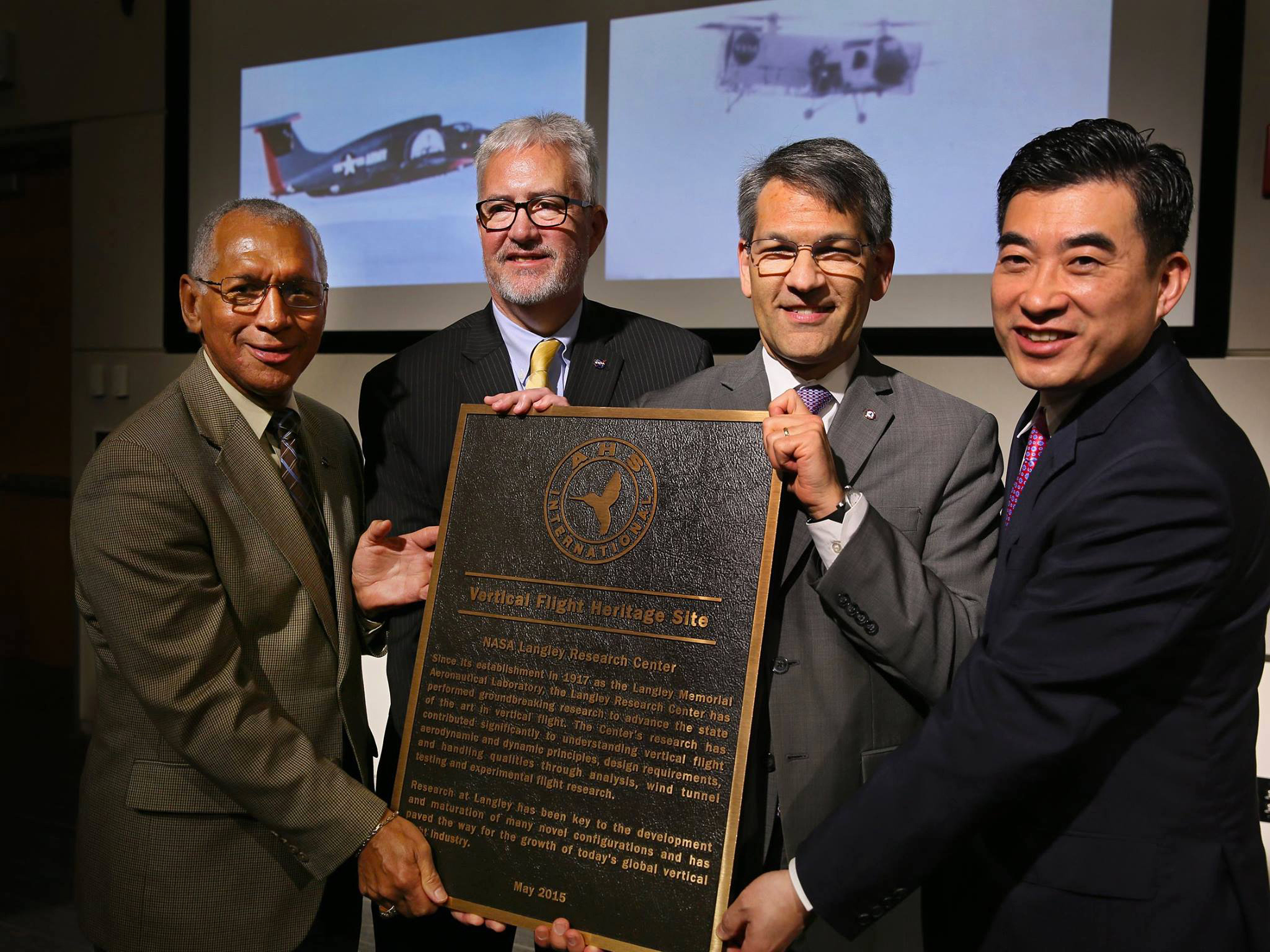NASA’s Langley Research Center in Hampton, Virginia, was recognized Friday for its decades of contributions to the advancement of helicopters and other vertical flight aircraft.

In a ceremony at Langley’s Reid Conference Center, NASA Administrator Charles Bolden accepted the award on behalf of the agency from the American Helicopter Society (AHS) International, the world’s only international society for engineers, scientists and others working on vertical flight technology.
“In 1920, the National Advisory Committee for Aeronautics released a technical paper that was penned by Langley’s chief physicist, E.P. Warner that was entitled “The Problem of the Helicopter,” said Bolden. “Since then, Langley researchers have provided research and data to the world that have advanced vertical flight – and all flight as we know it.”
A four-minute video recapped much of Langley’s 95-year history in vertical flight research, including wind tunnel, flight and crash tests. It featured aircraft with names such as the Flying Banana, Autogiro and Sky Crane. The concepts shown included not only dozens of conventional helicopters, but also less conventional vertical take-off and landing aircraft.
Jaiwon Shin, associate administrator of NASA’s Aeronautics Research Mission Directorate in Washington, spoke about current and future NASA vertical flight research.
“Our research goals call for enabling vertical lift technology that can be used by industry as early as 2025, which will reduce fuel consumption by half over today’s numbers,” said Shin. “We are also working to lower the perceived noise level of helicopters by 10 decibels from today’s regulated standards.”
Mike Hirschberg, executive director of AHS International, presented a plaque that reads: “The center’s research has contributed significantly to understanding vertical flight aerodynamic and dynamic principles, design requirements, and handling qualities through analysis, wind tunnel testing and experimental flight research.”
The plaque will be prominently displayed at Langley at a site to be determined.
For more information about Langley Research Center, go to: www.nasa.gov/langley
For more information about NASA’s aeronautics research, go to: aeronautics.nasa.gov
-end-
NASA Langley news releases are available automatically by sending an e-mail message to langley-news-request@lists.nasa.gov with the word “subscribe” in the subject line. You will receive an e-mail instructing you to reply to confirm the action. To unsubscribe, send an e-mail message to langley-news-request@lists.nasa.gov with the word “unsubscribe” in the subject line.
Kathy Barnstorff
Langley Research Center, Hampton, Va.
757-864-9886/757-344-8511
kathy.barnstorff@nasa.gov
J.D. Harrington
Headquarters, Washington
202-358-5241
j.d.harrington@nasa.gov



























